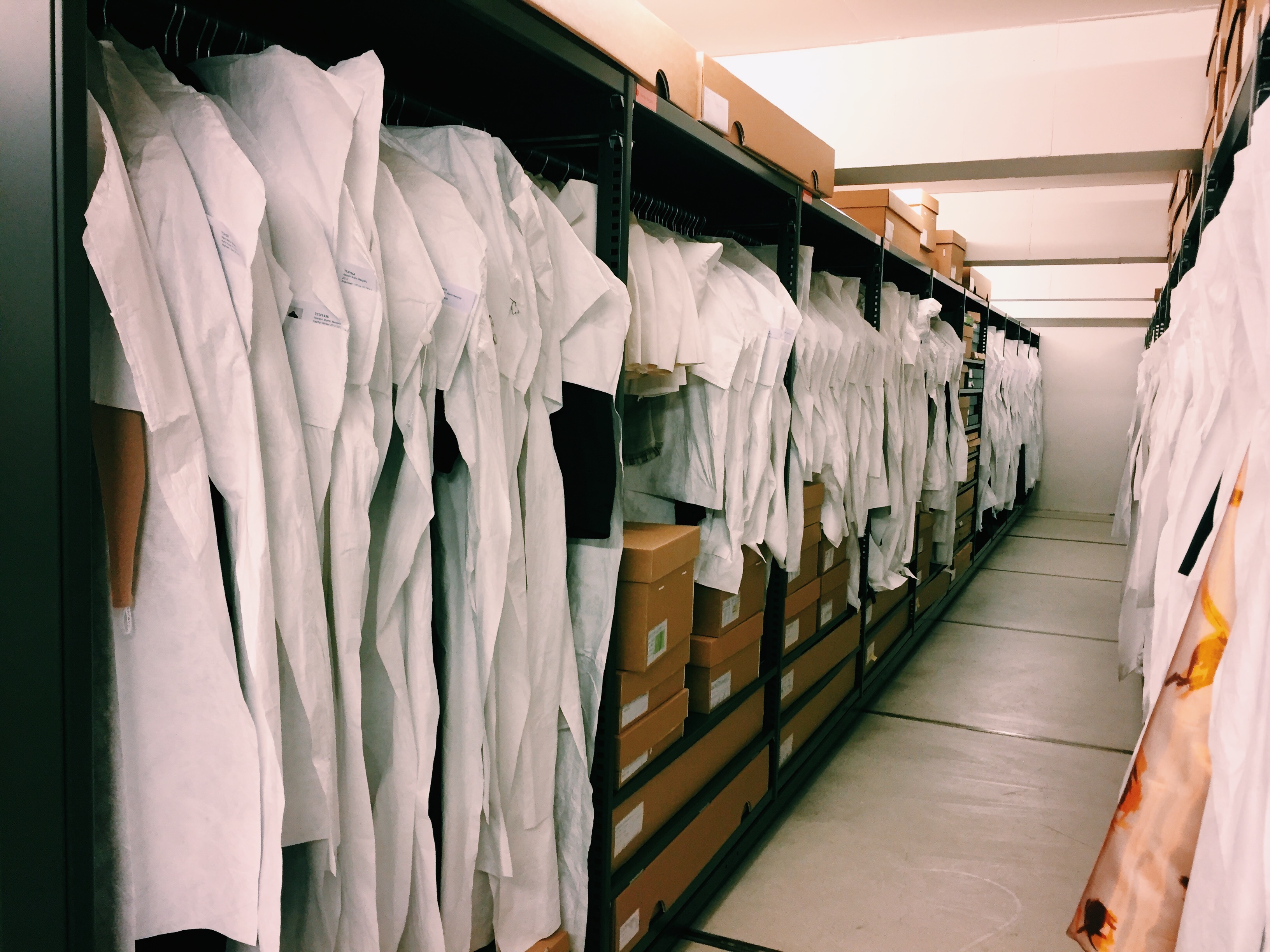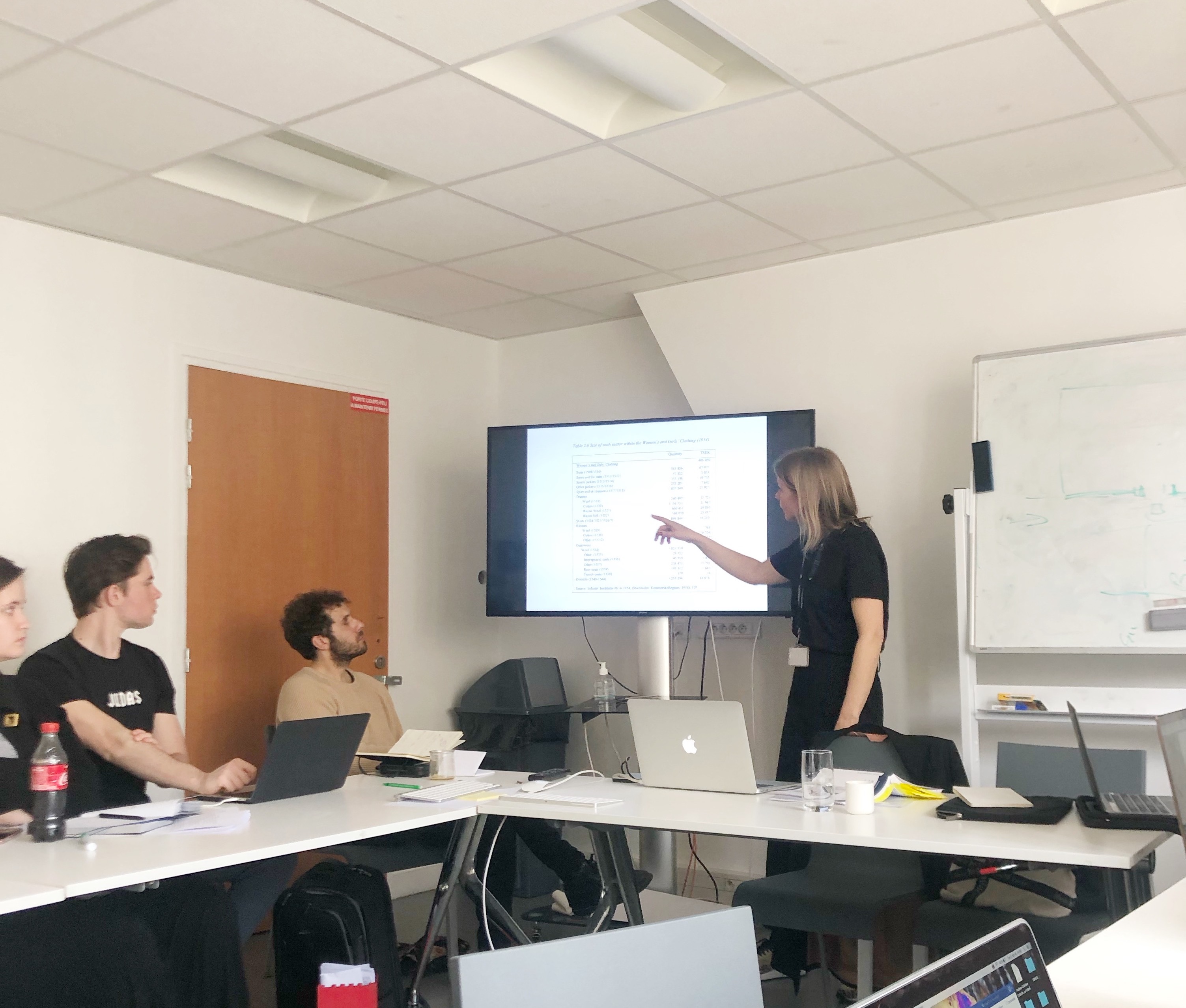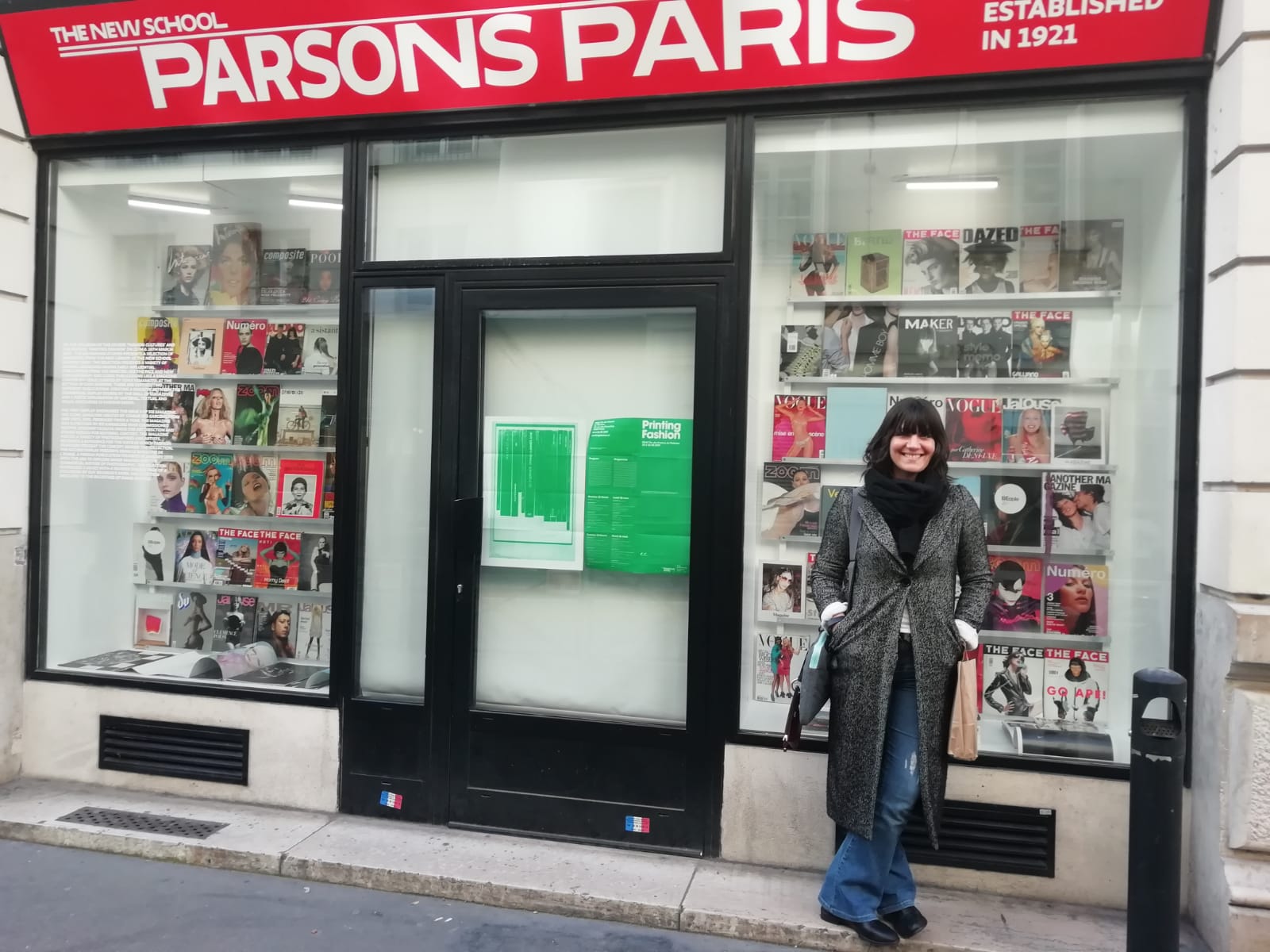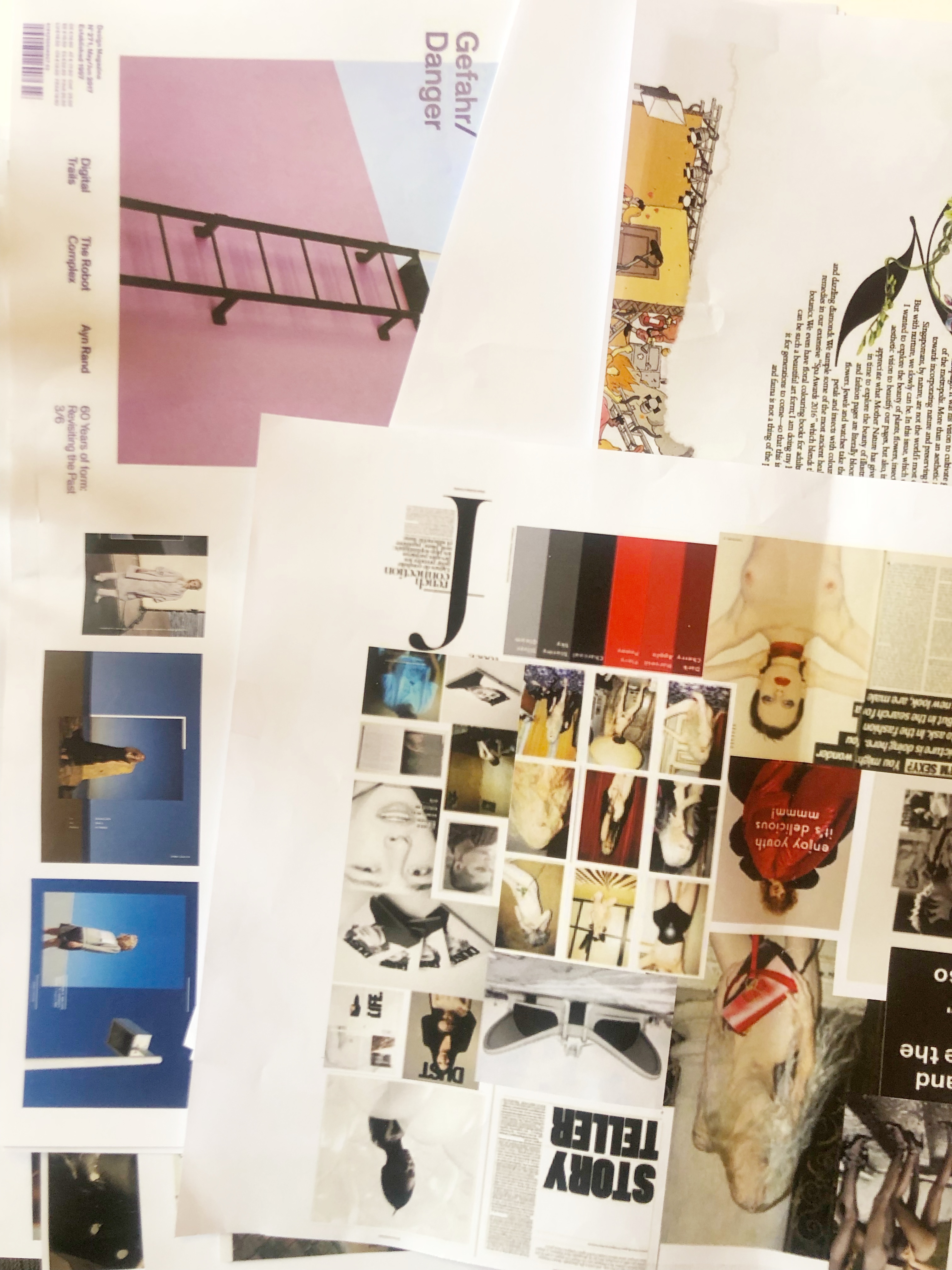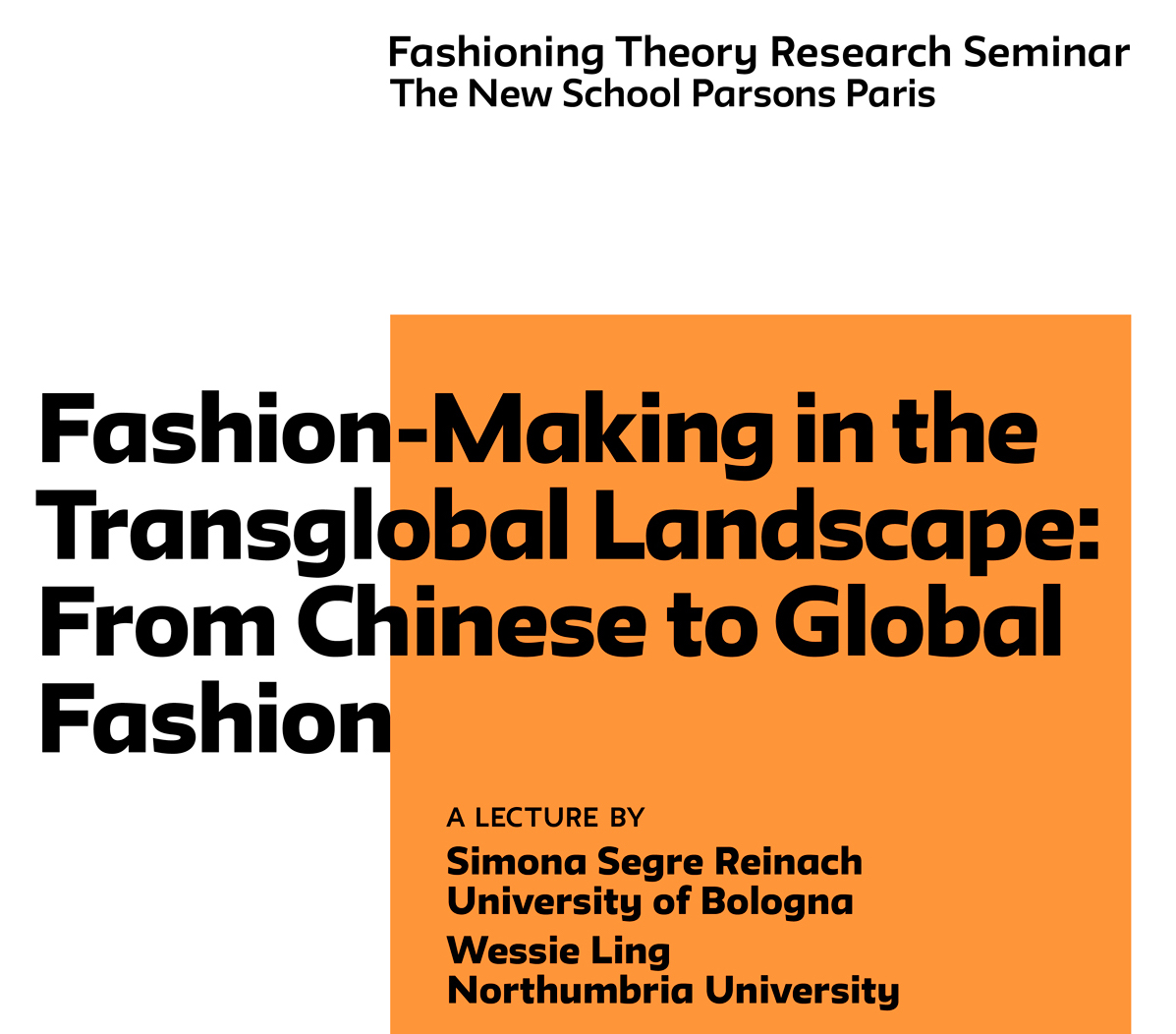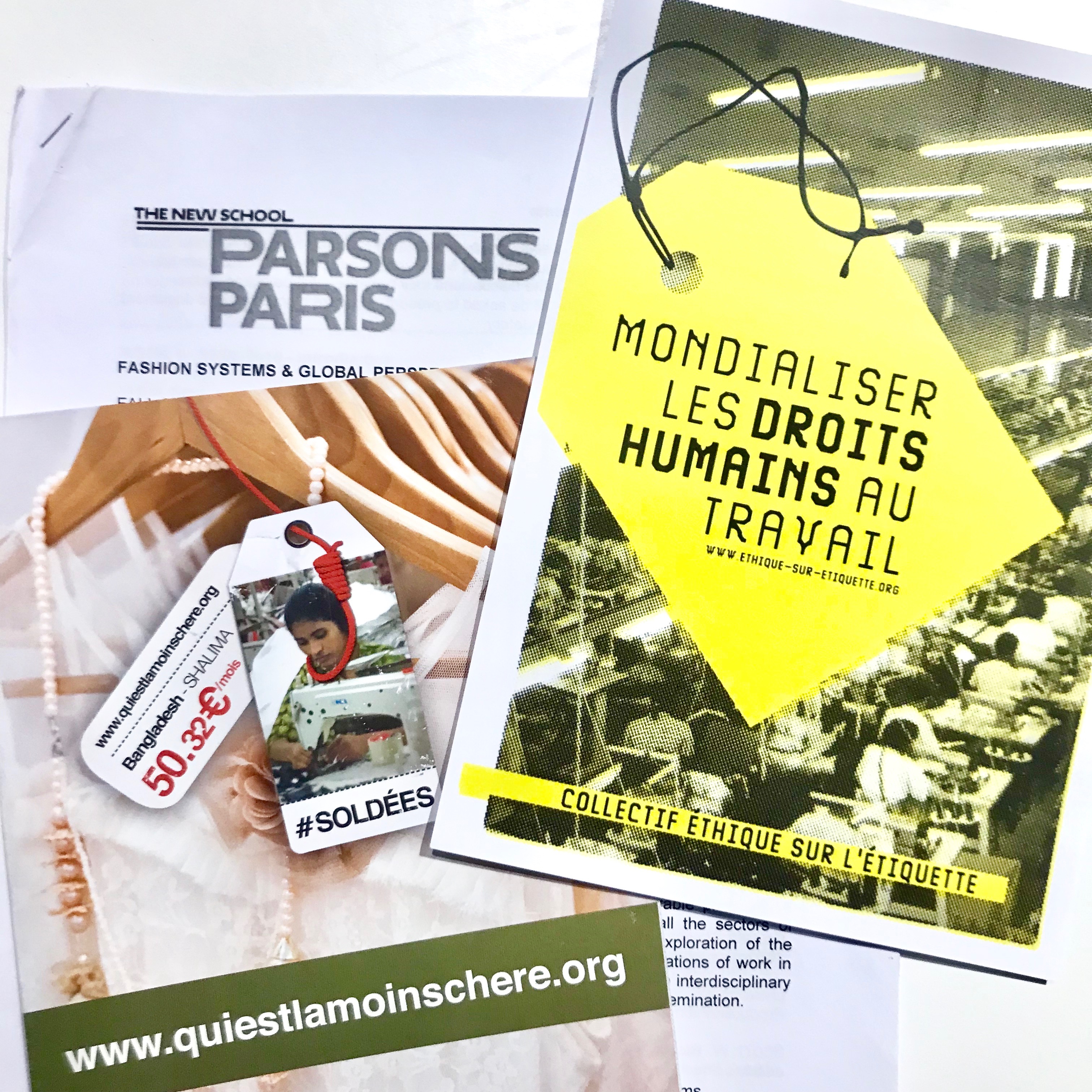From March 20th – March 21st the first year MAFS students headed to the MoMu in Antwerp, Belgium. In May, we will be opening an exhibition problematizing the idea of the study collection at MoMu, so our 48 hours at the institution were an invaluable resource to begin our research. Over the two days, we participated in a number of workshops and lectures by different practitioners within the institution and had a chance to work with the museum’s study collection itself.
The study collection is a complicated aspect and asset of MoMu. Questions regarding the collection policy, conservation methods, relation to the actual museum collection, management, preservation policies, and access have all been grappled with over the inaugural years of the study collection. The study collection was born of what members of the museum called a “grey area” of objects—objects that were not accessioned to the main collection, but worth more than throwing away. Now, those residual objects have found a home in the study collection; which currently numbers 500 items, but is growing.
The collection itself is comprised of garments, objects, textiles, shoes, and accessories from multiple sources. The first is a long-term loan of garments from the University of Antwerp, which originally obtained the garments from the Fashion Institute of Technology in New York City. The second is a large donation from private collector Jacoba de Jonge, a woman who collected women’s wear from the 18th and 19th centuries for 50 years. Third, is through various donations from private collectors. Fourth, is a donation from private collector, Frieda Verhees-Dauphin, a teacher at the Antwerp Theatre Academy, and fashion collector. Lastly, is garments from MoMu’s main collection that have been accessioned to the study collection due to wear, age, etc.
The first lecture that we heard was The Study Collection at MoMu Library by Dieter Suls, the scientific librarian at MoMu. According to Suls, the mission of MoMu can be summed up in four parts: preservation, education, collection, and research. Suls also offered our first introduction to the study collection.
Next was Wim Mertens, one of the collections curators at MoMu. His team is composed of himself and one other curator, an assistant curator, and three conservers. Mertens is in charge of historical collections, and one of his responsibilities is register new acquisitions. He took us on a tour of the rich archives of Belgian designers—the focus of MoMu’s collecting policy. We were able to see garments from Belgian designers such as Maison Martin Margiela, Raf Simons and Ann Demulemeester, but also from non-Belgian Avant-Garde designers such as Rei Kawakubo and Issey Miyake.
The third lecture that we heard was by Frieda Sorber, the curator of the study collection. She was a rich source of knowledge for us with a background in archaeology, ethnography, art history, textiles and technology. She made a point that, “Archaeology and ethnography teach you to learn from objects as primary sources, and additional sources such as literature, iconography, etc. take second place and should be doubted if the contradict what the object has to say.”
Lastly, Elisa de Wyngaert, curator at MoMu alongside Kaat Debo, gave us a lecture. She offered a unique perspective on what it means to be a “Belgian fashion designer”, the curation of the recent Olivier Theskyens She Walks in Beauty exhibition, and how she sees the future of the study collection within MoMu.
The study collection allows for hands-on examination by students, scholars, and fashion enthusiasts. The aspect of touch within the study collection, that is not typical for main or exhibited collections, is enticing for groups such as lace makers, embroiderers, and weavers, as well.
The first year MAFS students, as well as two second-year students on mobility from the New York campus will be putting on an exhibition in May focusing on MoMu as an institution, the history of MoMu’s study collection, the main collection vs. study collection, and the ideas of “touch” and “access” within the study collection.
Written by: Katie Wilkes, MA Fashion Studies
Photos: Ariel Stark and Philippa Nesbitt, MA Fashion Studies







